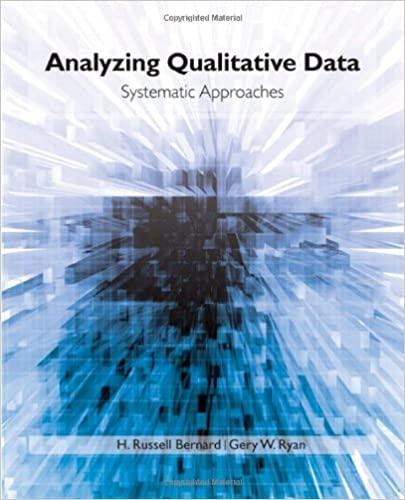Question
PEER RESPONSE NEEDED FOR BELOW: Although the IAT test results may have suggested a strong automatic preference for White people over Black people, it is
PEER RESPONSE NEEDED FOR BELOW:
Although the IAT test results may have suggested a "strong automatic preference for White people over Black people," it is important to consider that these results do not define my beliefs or actions. As a child of an immigrant family, I strongly believe in equality regardless of race, and I strive to treat everyone with fairness and respect. Although I strive to be unbiased, I must acknowledge that biases can arise from my upbringing, experiences, and socialization. These biases can impact my public health practice or research by influencing my decision making and possibly leading to inequitable outcomes. To ensure my public health practice or research is as fair and equitable as possible, I must continuously check myself for any implicit biases and actively strive to challenge any biases I may have.
As a public health advisor, I would be interested in working with the homeless population. Homelessness is a complex issue that requires a multi-faceted approach. I would focus on identifying the root causes of homelessness, such as lack of affordable housing, poverty, and mental health issues, and work to develop strategies to address these underlying causes. According to the National Alliance to End Homelessness, "Homelessness has been on the rise since 2017, experiencing an overall increase of 6 percent. In 2022, counts of individuals (421,392 people) and chronically homeless individuals (127,768) reached record highs in the history of data collection." This rise in homelessness has been particularly severe in cities and rural areas alike, with homeless individuals facing increased difficulty in accessing resources and finding safe shelter. The situation has been exacerbated by the COVID-19 pandemic, with many people losing their jobs and homes due to economic instability.
Culturally appropriate communication practices for persons who share homelessness and health professionals who provide services to that population include listening actively and respectfully to homeless people and understanding their perspectives, treating them with dignity and respect, being non-judgmental, and not making assumptions about their experiences. Additionally, it is important to ensure that all communications are confidential and in a language that the homeless person can understand. Health professionals should also be aware of any potential stigma or discrimination that homeless persons may have experienced and strive to create an environment that is safe and welcoming. When communicating with the homeless population, people-first language should be used becuase a person-first language emphasizes a person's humanity and focuses on the person's strengths, rather than their disability, illness or situation. This approach can help to foster a sense of respect and empathy.
A public health professional could use focus groups, interviews, or surveys to better understand the needs of the youth in this subpopulation or other populations of interest. This data could be used to better inform the adaptation of the curriculum to make it more effective and relevant for the target population. Additionally, the use of observation or field notes could be used to observe the youth in their natural environment to better understand their behavior and challenges. To evaluate the adaptation of the intervention, we could conduct an outcome evaluation to measure the impact of the intervention on the target population. This could include a pre- and post-test design to assess changes in knowledge, attitudes, and behaviors related to sexual risk reduction. Additionally, surveys and interviews could be conducted to measure participant satisfaction and satisfaction with the adapted intervention.
References
Eaton, K. (2023, March 16). Report: Homelessness in rural U.S. increased from 2020 to 2022. The Daily Yonder. https://dailyyonder.com/report-homelessness-in-rural-increased-from-2020-to-2022/2023/02/21/#:~:text=The%20number%20of%20people%20overall,county%2C%20metropolitan%20area%2C%20or%20an
State of Homelessness: 2023 edition. National Alliance to End Homelessness. (2023, May 23). https://endhomelessness.org/homelessness-in-america/homelessness-statistics/state-of-homelessness
Step by Step Solution
There are 3 Steps involved in it
Step: 1

Get Instant Access to Expert-Tailored Solutions
See step-by-step solutions with expert insights and AI powered tools for academic success
Step: 2

Step: 3

Ace Your Homework with AI
Get the answers you need in no time with our AI-driven, step-by-step assistance
Get Started


